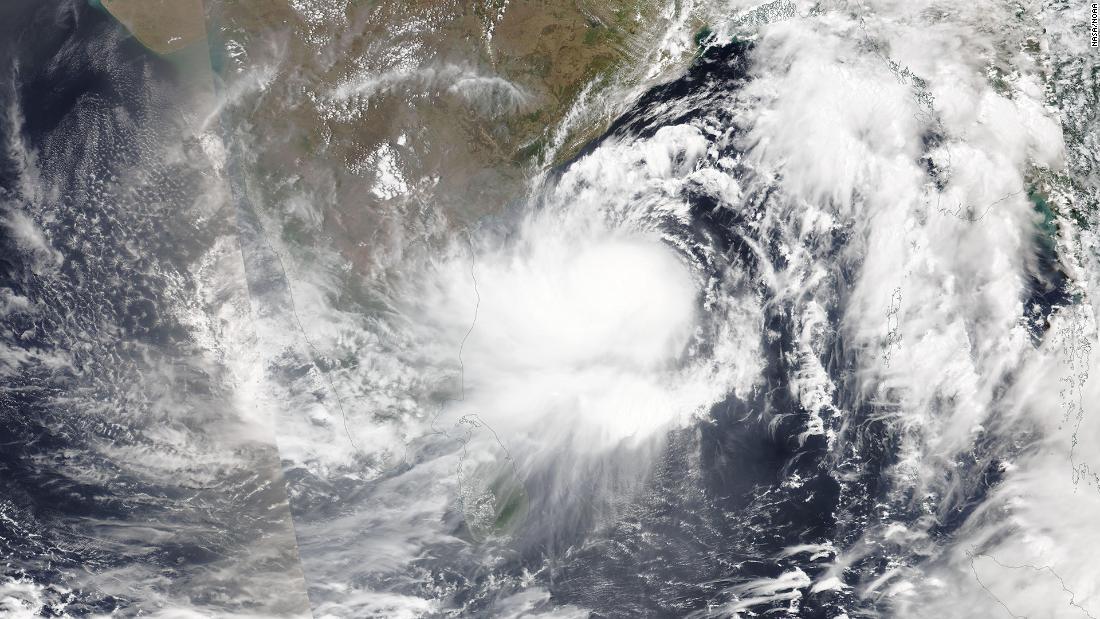
Whilst the cyclone would possibly convey some aid from the warmth, it is going to be too some distance away to impact lots of the nation — and may just make the warmth worse for some.
Because the hurricane strikes on a northwest monitor, spaces throughout jap India’s central coast will really feel well-liked wind and rain affects.
Asani is the second one hurricane to affect India this season. The primary hurricane, in March in southern India, used to be now not named.
Sluggish-moving hurricane may just convey catastrophic rain
Through Thursday, the hurricane will in all probability start to curve extra north-northeast, driving alongside the coast and impacting Odisha.
The interplay with land will reason the hurricane to step by step weaken, even though it nonetheless will produce slightly a bit of of rainfall because it slows.
“Now that Asani’s ahead pace has slowed considerably, longer length heavy rains are conceivable alongside the coast, expanding the potential of flooding rainfall,” CNN meteorologist Chad Myers mentioned.
In the case of loss of life and destruction with tropical cyclones, rain is a key issue to believe.
Portions of India’s coast, close to the hurricane’s landfall location, may just see up to 150 mm (6 inches) of rainfall all the way through the following few days.
Asani’s cloud duvet may just convey some aid from the warmth alongside parts of the coast. Then again, the hurricane additionally may just imply the ones additional inland see hovering temperatures.
No longer sufficient to alleviate sizzling temperatures
This hurricane arrives amid a brutal warmth wave impacting a lot of central India. Temperatures there soared Tuesday as prime as 45 levels Celsius (113 levels Fahrenheit).
This warmth wave continues a brutal stretch of warmth in April throughout portions of the rustic, together with New Delhi.
“They skilled 19 days of the month with a prime temperature above 40 levels Celsius (104 levels Fahrenheit), which is easily above their reasonable April prime temperature of 37 levels Celsius (98.6 levels Fahrenheit),” CNN meteorologist Robert Shakelford mentioned. “This warmth additionally used to be important because it used to be the most up to date April for northwest India, smartly above their April commonplace.”
Asani may just make the warmth wave worse on account of the impact of all of a sudden emerging air in and across the eye, or low-pressure middle, and sinking air and better stress alongside its outer edge.
“This may occasionally act to restrict any cloud formation, resulting in complete solar and warming temperatures,” CNN meteorologist Brandon Miller mentioned. “It brings rainfall and cooler temperatures to spaces it hits, however for central and northerly/western portions (of India), it might generally tend to irritate the warmth wave.”
The one aid for the remainder of India will include the onset of monsoons.
The beginning of monsoon season
Cyclones normally do not happen all the way through the monsoon season as a result of an excessive amount of wind shear — robust higher stage winds that tear tropical programs aside — within the surroundings generally tend to ban building.
Then again, all the way through the season’s get started, cyclones can expand whilst wind shear remains to be fairly susceptible.
Whilst the monsoon — which delivers aid from relentless warmth — will start achieving the southernmost spaces of India by way of the tip of Would possibly, it does not normally succeed in New Delhi till the start of July, leaving a variety of room for extra days of bad warmth.
